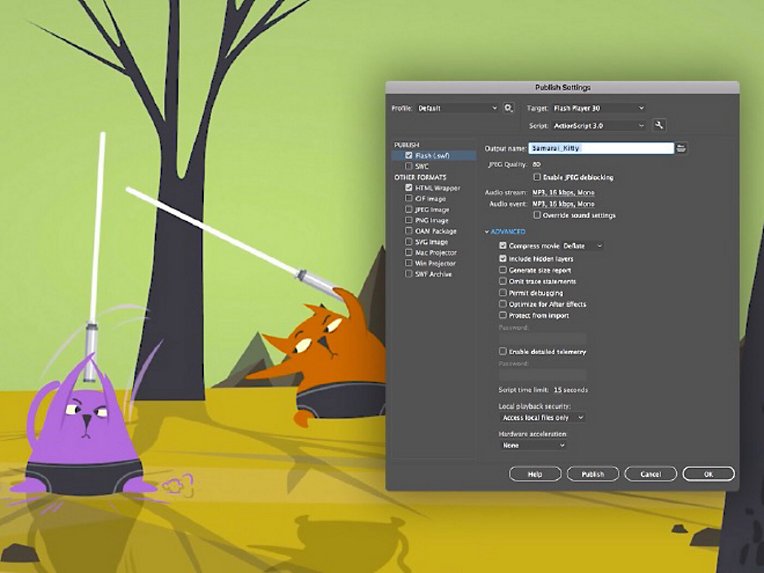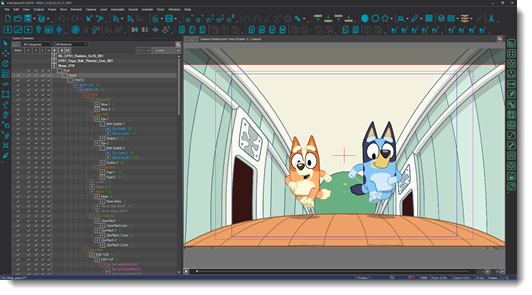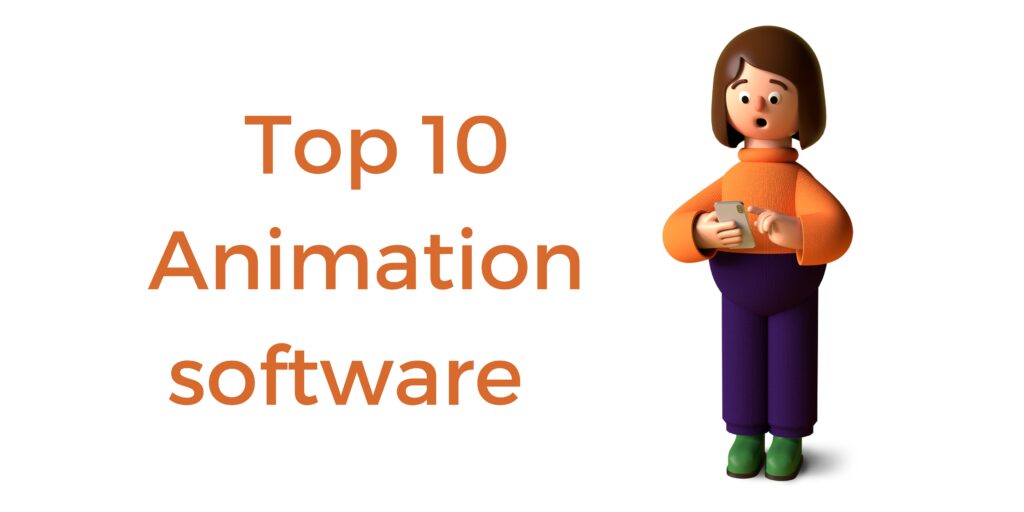
Welcome to the world where imagination dances with technology! No matter your experience level in animation, the right tools are key to success. Check out our top 10 animation software. These tools will boost your storytelling, improve your visuals, and make production easier. These modern platforms help you create amazing animations from your ideas. They provide fluid character movements and impressive visual effects that capture attention. Get ready! Buckle up to explore the best tools that will bring your ideas to life!
Some software works well for beginners. Others are meant for professional animators with advanced skills.
Here are the top 10 animation software options available today:
1. Adobe Animate
2. Toon Boom Harmony
3. Blender
4. Autodesk Maya
5. Moho (Anime Studio)
6. Synfig Studio
7. TVPaint Animation
8. CelAction2D
9. Pencil2D
10. OpenToonza
1. Adobe Animate:
Adobe Animate is a popular software option for creating 2D animations. It has many tools for vector art, timeline editing, interactivity, and web animations. The software also lets you publish on many platforms. It integrates with other Adobe products like Photoshop and After Effects. But it can be slow and use a lot of resources. Also, beginners might find it hard to learn at first.
Pros:
- Offers many animation tools and features.
- Supports vector graphics and creates interactive animations.
- Integrates with other Adobe Creative Cloud apps.
- Publishes to various platforms like HTML5, WebGL, and Air.
Cons:
- Beginners face a steep learning curve.
- The subscription model can be expensive.
- It may use a lot of resources on older machines.
Features:
- Keyframe-based timeline animation
- Supports character and motion graphics animation
- JavaScript for automation and scripting
- Connects with Adobe Stock for assets
2. Toon Boom Harmony:
Toon Boom Harmony is top-notch animation software. It has advanced tools for 2D and 3D animation. It has rigging tools, particle effects, and camera controls. Plus, it offers strong collaborative features. This setup facilitates seamless collaboration among teams. But, it can be costly, especially the premium version. Beginners might also find it challenging to learn.
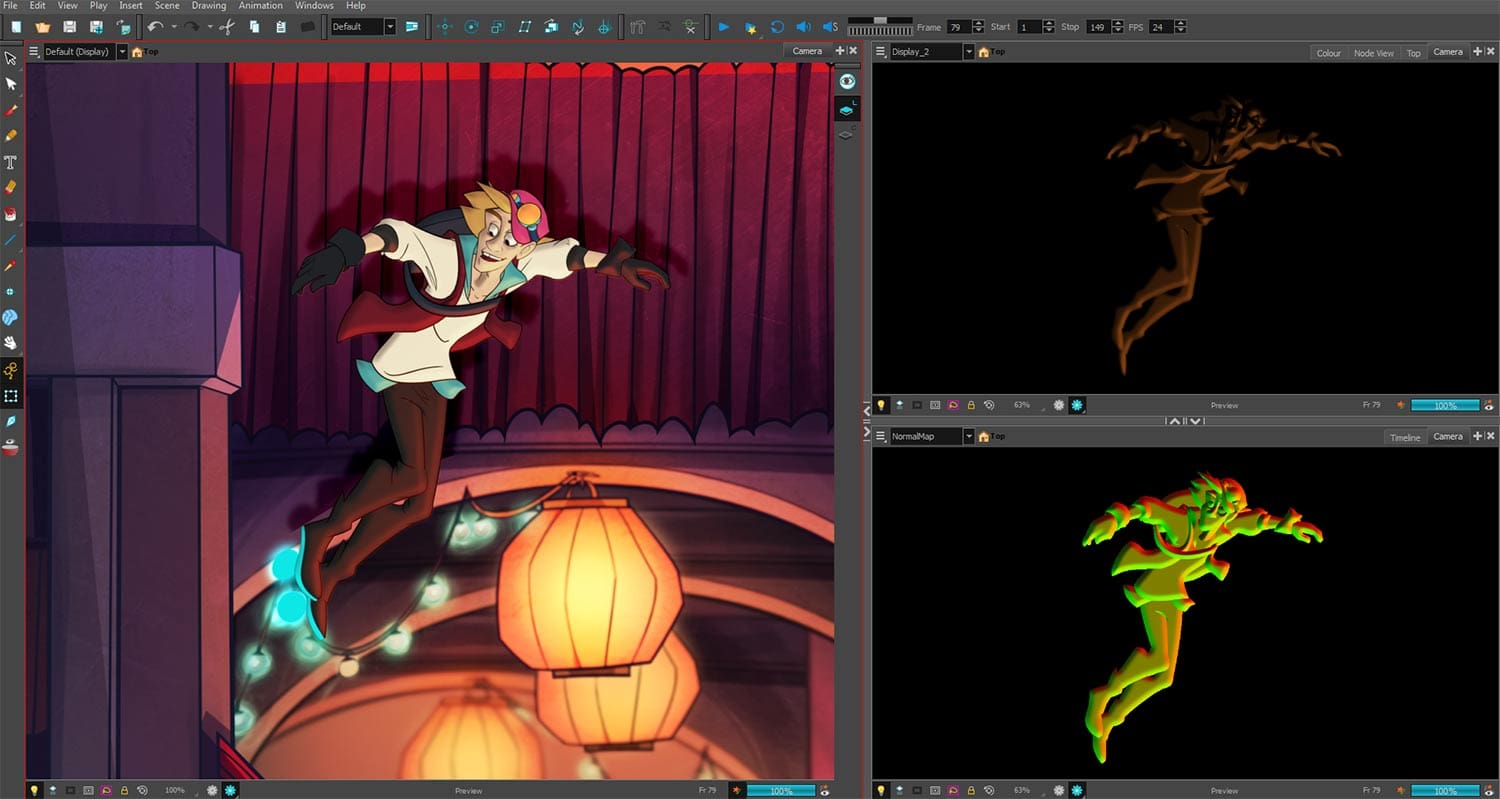
Pros:
- Industry standard for 2D animation.
- Offers a wide range of animation and rigging features.
- Create traditional hand-drawn or cut-out style animations.
- Supports 3D compositing and special effects.
Cons:
- High cost for pro versions
- Difficult for beginners to learn
- Needs a strong computer to run well
Features:
- Tools for rigging characters in animation
- Bitmap brushes and vector drawing features
- Animation using a keyframe timeline
- Compatible with other Toon Boom software
3. Blender:
Blender is free and open-source 3D animation software. It has many tools for modeling, sculpting, and texturing. It has advanced features for animation and rendering. It’s also very customizable. Many developers in the community create plugins and add-ons. It can be tough for beginners to learn. It also lacks some features that specialized 3D animation software offers. Plus, you need a powerful computer for it to run well.

Pros:
- It’s free and open-source.
- It supports 3D animation, modeling, and compositing.
- There’s a big community for support and resources.
- You can also use it for game development and video editing.
Cons:
- Beginners face a steep learning curve.
- The interface can feel overwhelming at first.
- It’s not as good for 2D animation compared to other software.
Features:
- Tools for 3D modeling and rigging
- Simulation of physics and particle systems
- Animation based on timelines with keyframes
- Works with other software and add-ons
4. Autodesk Maya:
Autodesk Maya is a top-tier 3D animation software. It’s popular in film, TV, and gaming. It has great tools for modeling, rigging, and animation. It also includes features for simulation and visual effects. The software is very customizable. It has a big library of plugins and add-ons. But it can be pricey, especially the premium version. Also, beginners may find it hard to learn.
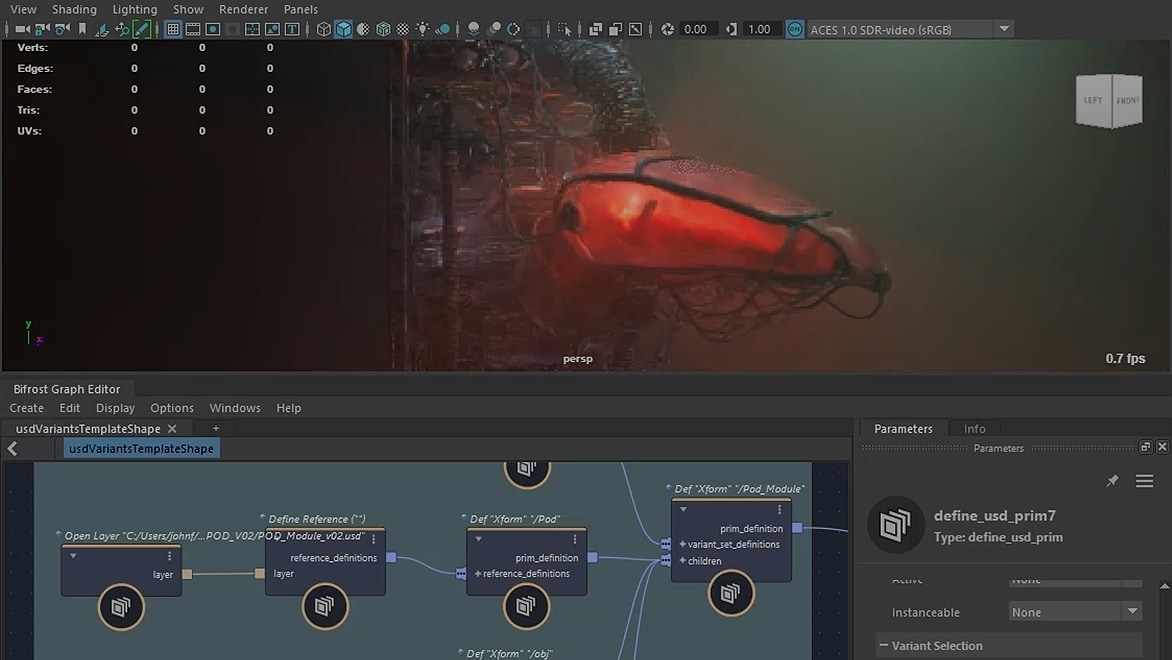
Features of Autodesk Maya:
1. Maya offers powerful 3D modeling tools. Users can easily create detailed and realistic models. It offers polygonal modeling, NURBS modeling, and subdivision surfaces, among other techniques.
2. Animation and Rigging: Maya excels in animation and rigging capabilities. It provides a powerful set of character animation tools. These tools include keyframe animation, motion capture integration, and advanced rigging features. This makes it a preferred choice for animators working on character-driven projects.
3. Maya offers many tools for simulation and effects. Users can create realistic animations and effects based on physics. It has tools for cloth simulation, particle systems, fluid simulations, and dynamics simulations. This lets you create realistic simulations and visual effects easily.
4. Scripting and Customization: Maya supports extensive scripting and customization options. It has a strong scripting language called MEL, which stands for Maya Embedded Language. You can also use Python with it. This lets you automate tasks, create custom tools, and add more features to the software.
5. Rendering Capabilities: Maya comes with a strong rendering engine called Arnold. It makes photorealistic images. It also supports global illumination, ray tracing, and deep EXR compositing. It also works with other renderers, like Mental Ray. You can use third-party renderers too, thanks to its wide range of plug-ins.
Cons of Autodesk Maya:
1. Steep Learning Curve: Maya’s interface is complex and packed with features, making it tough for beginners. Learning Maya takes time and effort. It has many tools and workflows, which can be hard for newcomers to 3D graphics.
2. Maya needs strong hardware to work well. It’s resource-heavy, especially with complex scenes and high-resolution assets. This can be a disadvantage for users with limited computing resources.
3. High Cost: Maya is professional software and has a high price. For individual artists or small studios with tight budgets, the cost of a Maya license or subscription can be too high.
4. Maya can sometimes have stability issues. It may crash now and then. This is more likely when you work with large scenes or specific features. Autodesk often releases updates and patches to fix these problems. Still, they can be frustrating.
5. Maya is popular software, but it doesn’t always integrate well with other software or third-party apps. Compatibility issues may occur when moving assets or data from Maya to other tools. This often means you need extra steps or workarounds.
It’s worth noting that Maya’s pros and cons can vary based on individual preferences and specific use cases. It has a steep learning curve and high system demands. Still, its many features and wide use make it a top choice for professional 3D artists and animators.
5. Moho (Anime Studio):
Moho, formerly known as Anime Studio, is an affordable 2D animation software with a user-friendly interface. It has many features for vector animation. These include bone-rigging tools and lip-syncing options. The software allows you to create animations frame by frame. It also offers many export options, like video and GIF. However, it may not be suitable for more advanced 2D animation projects, and limited support for importing external 3D models.

Pros:
- Cost-effective pricing
- Compatible with bitmap and vector graphics
- Allows for bone-based character animation
- Comes with lip-syncing tools
Cons:
- Fewer features than other professional software.
- Can be slow on older machines.
- Has some stability issues.
Features:
- Character animation with bone rigging
- Special effects and motion graphics
- Keyframe-based animation on a timeline
- Scripting support using Lua
6. Synfig Studio:
Synfig Studio is a free and open-source software for 2D animation. It has various tools for creating vector-based animations. You can use bone-rigging tools and onion-skinning features to enhance your work. It offers support for motion blur and shading and is highly customizable with a large library of plugins and add-ons available. It can be hard for beginners to learn. It might not work well for complex 2D animation projects. Also, it can be slower and less efficient than commercial software.

Pros:
- Free and open-source.
- Supports vector graphics and cut-out animation.
- Can create bone-based character animation.
- Offers various effects and filters.
Cons:
- Lacks features compared to other professional software.
- Can be slow on older machines.
- Has limited support and tutorial resources.
Features:
- Character animation with bone rigging
- Tools for vector drawing and bitmap brushes
- Animation on a timeline with keyframes
- Python scripting support
7. TVPaint Animation:
TVPaint Animation is a top-notch 2D animation software. It offers many advanced features. You can do traditional frame-by-frame animation. It also has a brush engine and a sound scrubbing tool. It offers support for 4K resolution and can be used for both traditional and paperless animation. However, it can be expensive and may have a steep learning curve for beginners.
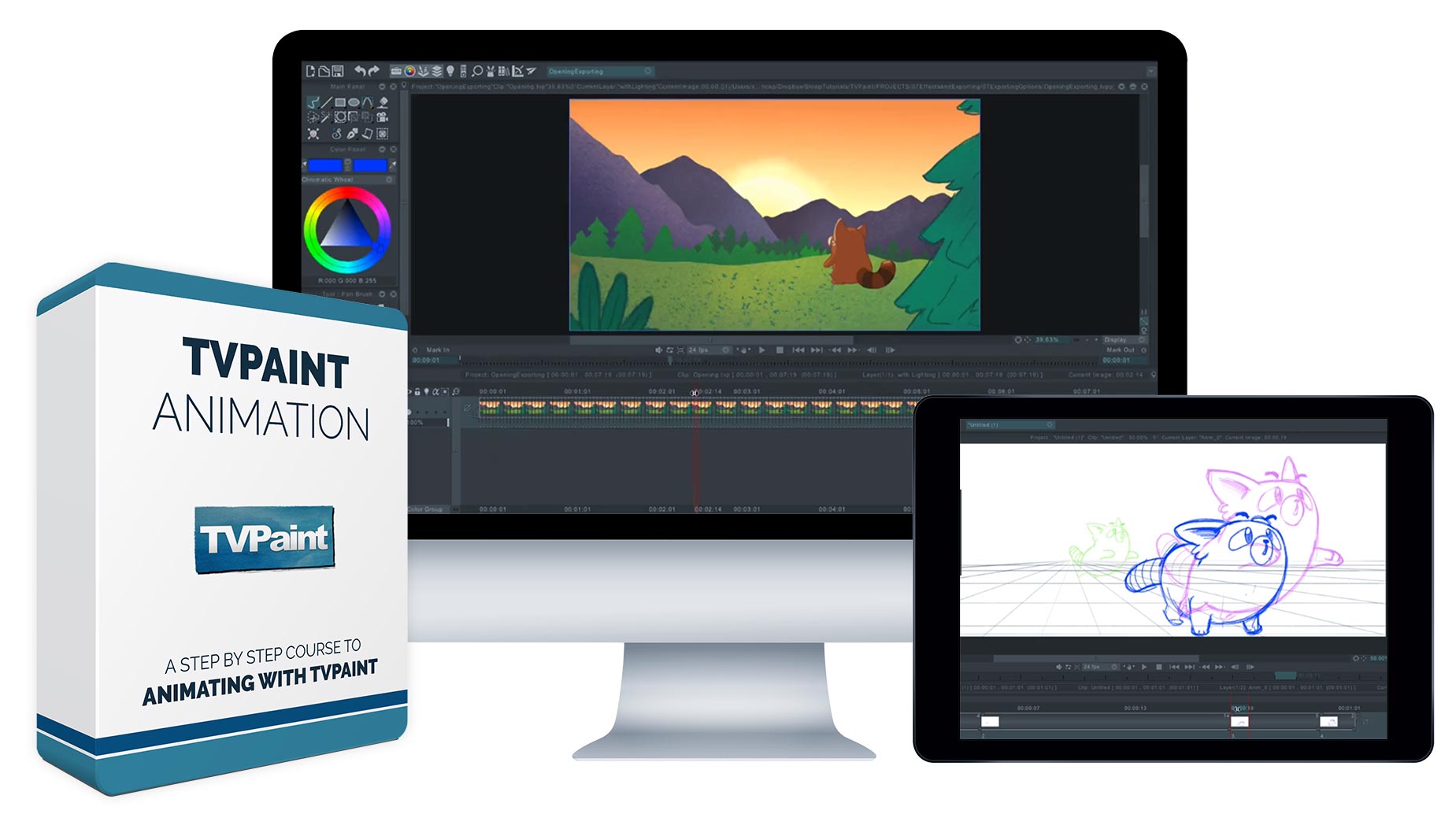
Pros:
- Industry standard for frame-by-frame animation.
- Offers many features for hand-drawn animation.
- Works with bitmap and vector graphics.
- Supports various file formats and platforms.
Cons:
- High cost for professional versions
- Difficult for beginners to learn
- Less optimization for certain tasks
8. CelAction2D:
CelAction2D is a professional-grade 2D animation software designed specifically for TV production. It offers a range of features, including a modular rigging system, cut-out animation, and a 3D camera system. The software also provides support for multiplane backgrounds and camera moves. However, it can be expensive and may have a steep learning curve for beginners.
Pros:
1. Professional Animation Tools: CelAction2D provides many strong animation tools. This makes it great for professional animators. It offers a complete set of tools for smooth, high-quality character animations.
2. Rigging and Posing Capabilities: The software lets users build detailed character rigs. Controls can be customized easily. Animators can easily pose characters and create complex movements. This gives them a lot of flexibility and creative control.
3. Real-time Playback: One of the notable advantages of CelAction2D is its real-time playback feature. Animators can preview their work instantly. This helps them see the final result and make quick adjustments.
4. Timeline Interface: With CelAction2D’s timeline, you can manage and organize your animation sequences with ease. Animators can adjust keyframes and timing. They also add motion to characters. This ensures smooth and clear animations.
5. Compatibility: CelAction2D works with many file formats. This makes it easy to use alongside other software in the animation pipeline. This helps connect easily with other tools, like compositing software, for post-production.
Cons:
1. Steep Learning Curve: CelAction2D can be quite challenging for beginners or those who are new to animation software. Its many features and complex interface can be hard to learn. This might feel overwhelming for some users.
2. Limited 3D Capabilities: CelAction2D focuses on 2D animation and does not have full 3D features. For projects with lots of 3D elements or camera moves, you might need extra software or some workarounds.
3. Cost: CelAction2D is commercial software. Its licensing cost may be a problem for small or independent animators. The price may not be feasible for individuals or small studios with limited budgets.
Features:
1. Keyframe Animation: CelAction2D lets animators use keyframe animation. This means they can create smooth and lively movements. They define key poses and then interpolate between them.
2. Rigging and Bone Systems: The software offers strong rigging and bone systems. This helps animators set up complex characters easily with user-friendly controls. This helps in achieving realistic deformations and simplifies the animation process.
3. Multiplane Camera: CelAction2D has a multiplane camera feature. This lets animators add depth and parallax effects by placing elements on separate layers. This adds visual depth to the animation and enhances the overall quality.
4. Effects and Compositing: The software has many effects and compositing tools. These help animators improve and refine their animations. This includes features like lighting effects, shadows, and blending modes.
5. Lip Syncing: CelAction2D has tools for lip syncing. Animators can match character mouth movements to dialogue or audio. This feature makes it easier to create realistic lip movements. It also boosts the quality of character performances.
The pros, cons, and features listed here are based on general observations. They may change based on personal preferences and specific animation needs.
9. Pencil2D:
Pencil2D is free and open-source. It’s a 2D animation software. You can use it for traditional frame-by-frame animation. It has many features to help you create animations easily. It offers many drawing tools and onion-skinning features. It also supports multiple layers and lets you export to different file formats. The software is lightweight and easy to use, making it a great option for beginners or those with limited resources. It might not have all the advanced features of commercial software. So, it may not be the best choice for complex animation projects.

Pros:
- Free and open-source.
- Supports traditional hand-drawn animation.
- Simple and easy-to-use interface.
- Lightweight, running smoothly on most machines.
Cons:
- Fewer features than other professional software.
- Not great for rigging or bone-based animation.
- Limited support and tutorial resources.
Features:
- Vector drawing tools and bitmap brushes.
- Timeline-based animation with keyframes.
- Onion skinning for traditional animation.
- Supports various file formats and platforms.
10. OpenToonz:
OpenToonz is free and open-source 2D animation software. It has many features. You can use vector and bitmap drawing tools. It also supports bone-rigging and motion graphics. The software has many advanced features. These include automatic in-betweening, a multiplane camera, and support for 3D backgrounds. However, it can have a steep learning curve for beginners and may not be as polished as some commercial software options.
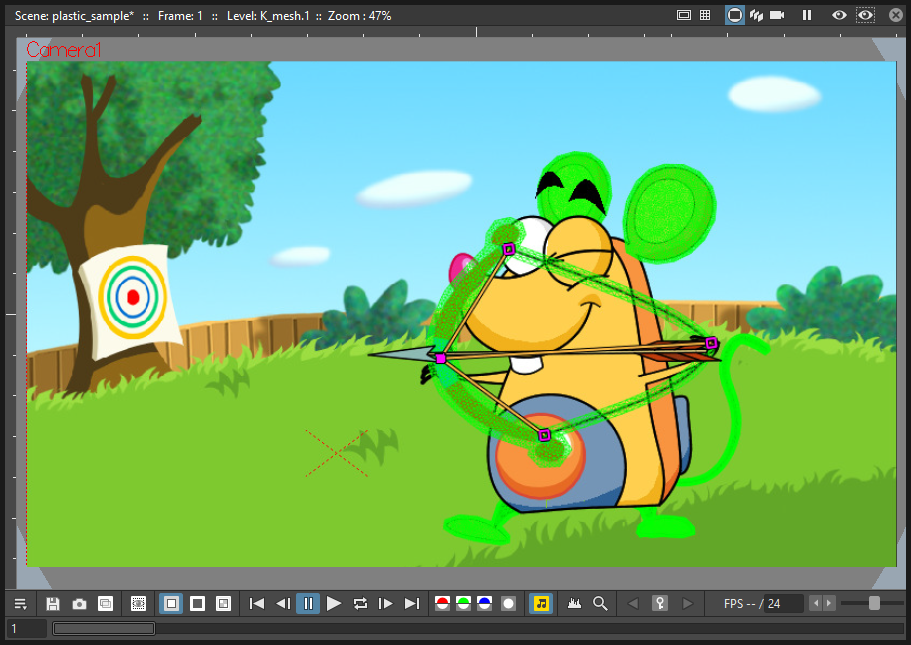
Pros:
- It’s free and open-source.
- You can make hand-drawn or cut-out animations.
- It supports many file formats and platforms.
- It has lots of effects and filters.
Cons:
- Beginners face a steep learning curve.
- It can run slowly on older machines.
- Resources for support and tutorials are limited.
Features:
- Character animation with bone-rigging
- Tools for vector drawing and bitmap brushes
- Keyframe-based animation on a timeline
- Integration with additional software and add-ons
Overall, each of these top 10 animation software options has its own unique set of strengths, weaknesses, and features. When deciding which software to use, it’s important to consider your specific needs and the type of animation you want to create. Also, consider the cost and learning curve of each software. Look at the support and community available for them too.
FAQ
-
Which is the No. 1 animation software? The title of “No. 1 animation software” varies depending on specific needs, but Adobe Animate is widely considered one of the top contenders. It has an easy-to-use interface. It also includes strong tools for 2D animation. Plus, it works well with other Adobe products. For 3D animation, many choose Autodesk Maya. It offers great features and flexibility.
-
Which is best for 3D animation? When it comes to 3D animation, Autodesk Maya is the industry leader. Its strong modeling, texturing, and rendering features make it a top choice for pros in film, gaming, and virtual reality. Other great options are Blender and Cinema 4D. Blender is open-source and growing in popularity for 3D projects. Cinema 4D is known for being easy to use, especially for motion graphics.
-
Is Cartoon Animator 5 free? Cartoon Animator 5 is not free, but it offers a free trial with limited features. To unlock the full range of tools and capabilities, a paid license is required. It’s popular with beginners and pros alike for 2D animation. It offers a user-friendly interface and strong features, such as motion capture and character rigging.
-
What is the number 1 animation app? The “number 1” animation app depends on the platform and user needs. Procreate for iPad is a leading choice for digital drawing and animation. Many users love its easy-to-use interface and strong brush tools. Adobe Animate and Toon Boom For 3D, Blender is highly popular due to its versatility and no-cost access to robust animation features.
These tools fit various animation needs. The “best” choice depends on your project and skills!

